The spiritual and inspirational power is so strong here,
the sense of joy and peacefulness is immediately transmitted,
and it’s truly life changing.
As chance would have it, I had just returned from a trip to Bhutan — my eighth visit to the kingdom in the past dozen years — when I met for the first time with the editor of CNBC Global Traveler. Our conversation was wide-ranging, but we dedicated much of our discussion to my latest adventure in the Land of the Thunder Dragon — and, specifically, to my time spent with His Eminence Khedrupchen Rinpoche at his 8th-century Sangchen Ogyen Tsuklag Monastery near Trongsa in Central Bhutan. Not long afterwards, the editor expressed an interest in publishing a story about Bhutan that featured my photography and included some of my personal experiences; following is the article — written by Stephanie Zubiri and documented by me — that was published online this week.
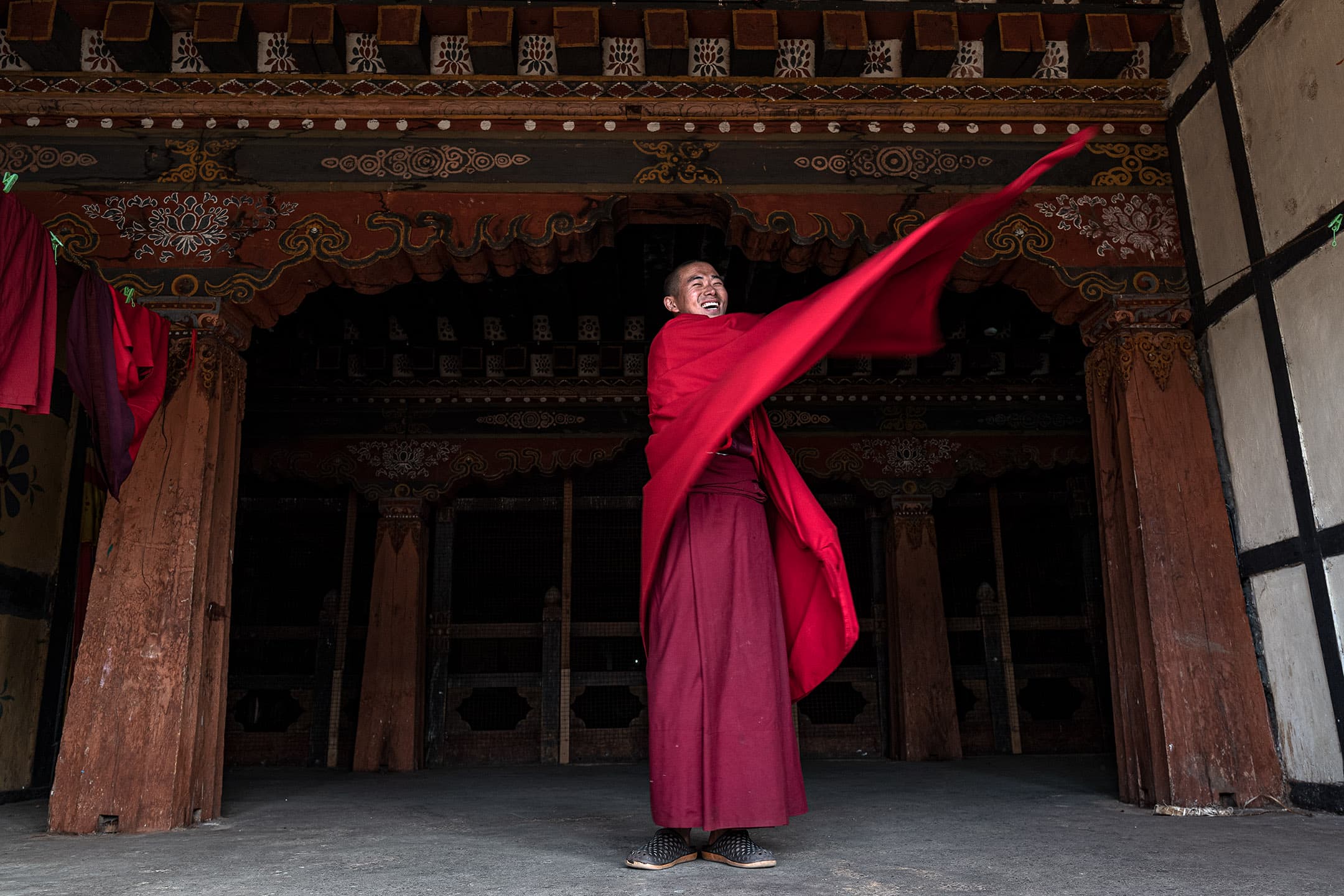
The phrase “Gross National Happiness” was coined in 1972 when Bhutan’s then-king, Jigme Singye Wangchuck, said: “Gross National Happiness is more important than Gross Domestic Product.”
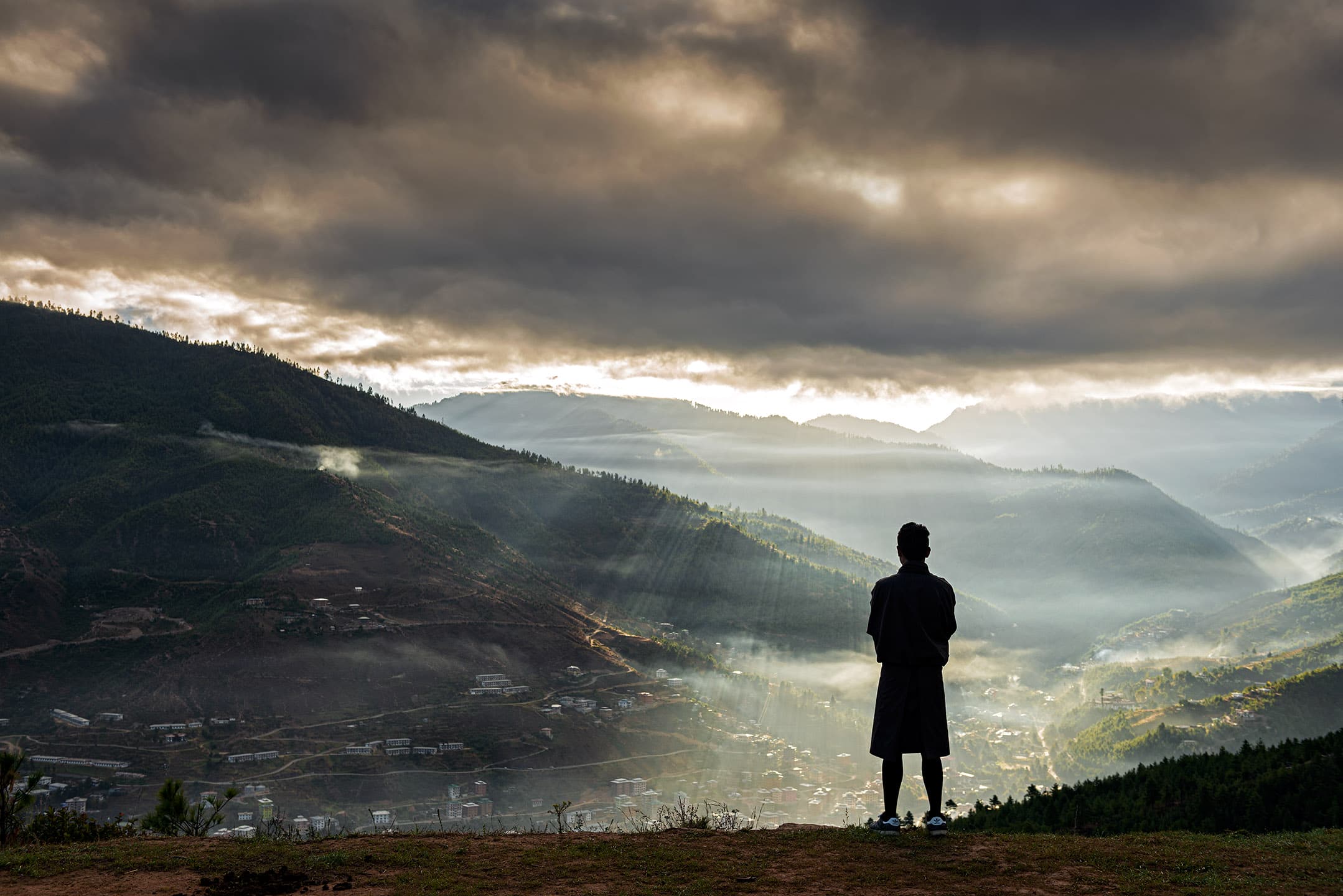
A young Bhutanese man looks down on Bhutan’s capital city of Thimphu as the early morning sun bursts through the clouds.
Colorful prayer flags flutter auspiciously across snow-capped ranges. Good intentions float through breathtakingly rugged terrain. Like the centuries-old fortresses (dzongs) and monasteries (lakhangs) that shine flecks of white and gold against the verdant foothills of the Himalayas, Bhutan — which means the Land of the Thunder Dragon — is steeped in mystery.
Enveloped by the Indian plains to the south and the mountainous Tibetan regions of China to the north, the country is naturally — and intentionally — isolated. The perilous landing at Paro International Airport could be considered barrier enough, with only eight pilots in the world trained to maneuver the soaring ridges that surround the valley.
While other countries pushed for quantity — pre-pandemically-speaking, of course — this tiny landlocked nation with a population of only 741,700 focused on travel quality. Mount Everest isn’t far, and even it feels more like a can of sardines than a peaceful summit.
Bhutan — or officially the Kingdom of Bhutan — wanted none of it, and decisions early on have resulted in the country being one of the most exclusive destinations in the world and a shining champion in global sustainable tourism.
“To the people of Bhutan, tourism is much more than just the realization of revenue and receipts,” said Dorji Dhradhul, director general of the Tourism Council of Bhutan. “Our tourism approach aims to enhance Gross National Happiness at the local level on the one
hand, and create awareness of the importance and potential of sustainable development at the global level on the other hand.”
Gross National Happiness, or GNH, is the index by which Bhutan measures the population’s collective happiness and well-being. Instituted by the government in the Constitution of Bhutan enacted in July of 2008, it is a major driving force behind the country’s policies.
Considering the crush of overtourism in other parts of the world, the government focused on high-quality tourism from the get-go. A policy of “high value, low volume” was later refined to “high value, low impact” — a small, but meaningful change that reveals Bhutan’s shift away from tourist numbers to sustainable travel practices.
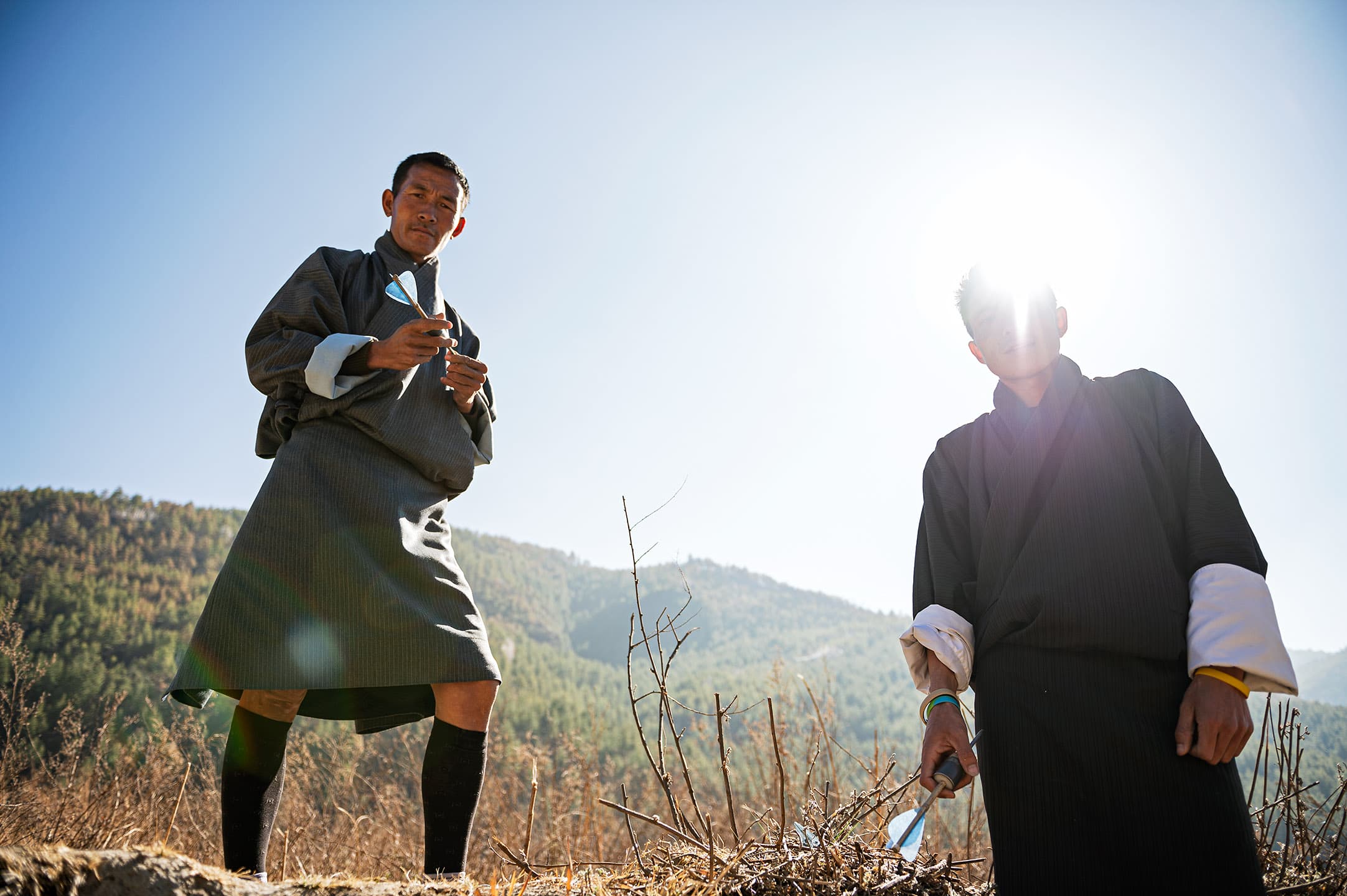
Two Bhutanese men dressed in ghos (the traditional national dress for men) take a break from playing khuru (traditional darts) in a Thimphu field.
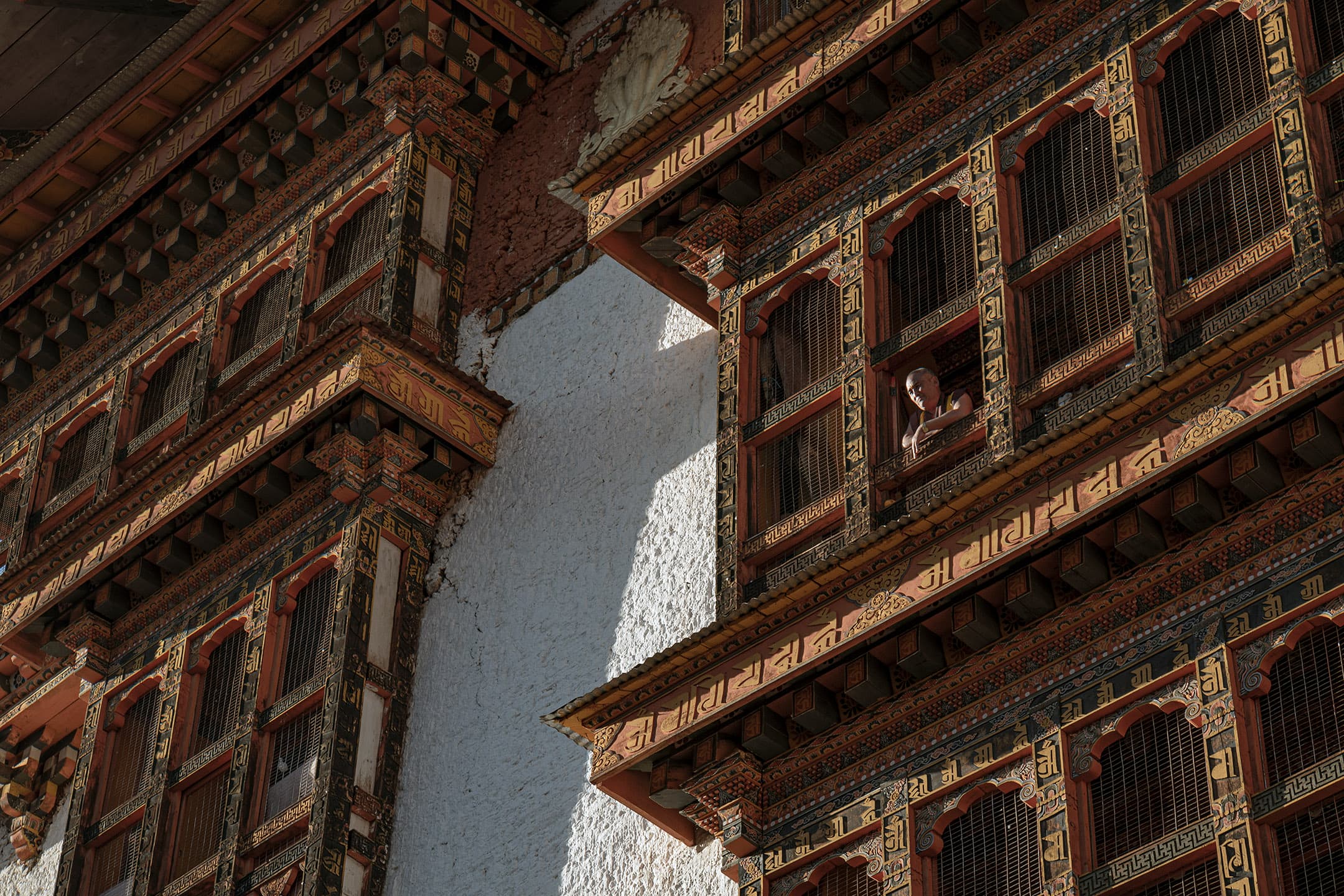
A monk stares down from Punakha Dzong, the second oldest dzong (fortress) in Bhutan and the seat of the government until the capital moved to Thimphu in the mid-1950s.
DOES BHUTAN WANT YOU?
Who is the ideal tourist to this enigmatic country?
“He is someone who is a responsible and open-minded,” said Dhradhul, adding that those who prioritize nature, culture and people in their choice of travel destinations fit the bill. “We have experienced firsthand how this automatically leads to not only respectful and mindful interactions, but also highly joyful and inspiring ones — not only for those visiting Bhutan but also for the Bhutanese.”
In February 2020, Bhutan made headlines as authorities announced a daily Sustainable Development Fee (SDF) of $17 starting in July 2020 for neighboring countries, which previously enjoyed unrestricted access.
“Of course, even Bhutan has its own tourism challenges from time to time,” says Dhradhul.
“The most recent one is the sudden surge in the number of arrivals coming from those few countries for which we did not yet apply the ‘High Value, Low Volume’ policy, resulting in a change in tourist profile.”
“The result was undue pressure on the carrying capacity of our service, infrastructure, culture and nature.”
IS BHUTAN WORTH THE PRICE?
For everyone else, visiting Bhutan does not come cheap. Visitors must spend a minimum of $250 per day in the high season (spring and autumn months); the per diem falls to $200 in the winter and summer.
“The minimum spend in Bhutan provides travelers with three-star accommodations, a private guide,
drivers, all meals and all entrance fees to monuments,” explains Joni Herison, managing director at Druk Asia, a Singapore-based travel company.
The amount includes a higher SDF of $65, which netted the government $20 million in 2018.
And what of accusations that the per diem is too high? Reviews from those who have gone think not.
“It’s a luxurious experience for many first-time visitors to Bhutan,” said Herison. “Bhutan offers a rich experience for the current price, and this price should, in my opinion, be adjusted to keep up with inflation.”
The discerning traveler can add a supplementary fee for more luxe accommodations with international resort groups such as Six Senses, Aman and COMO.
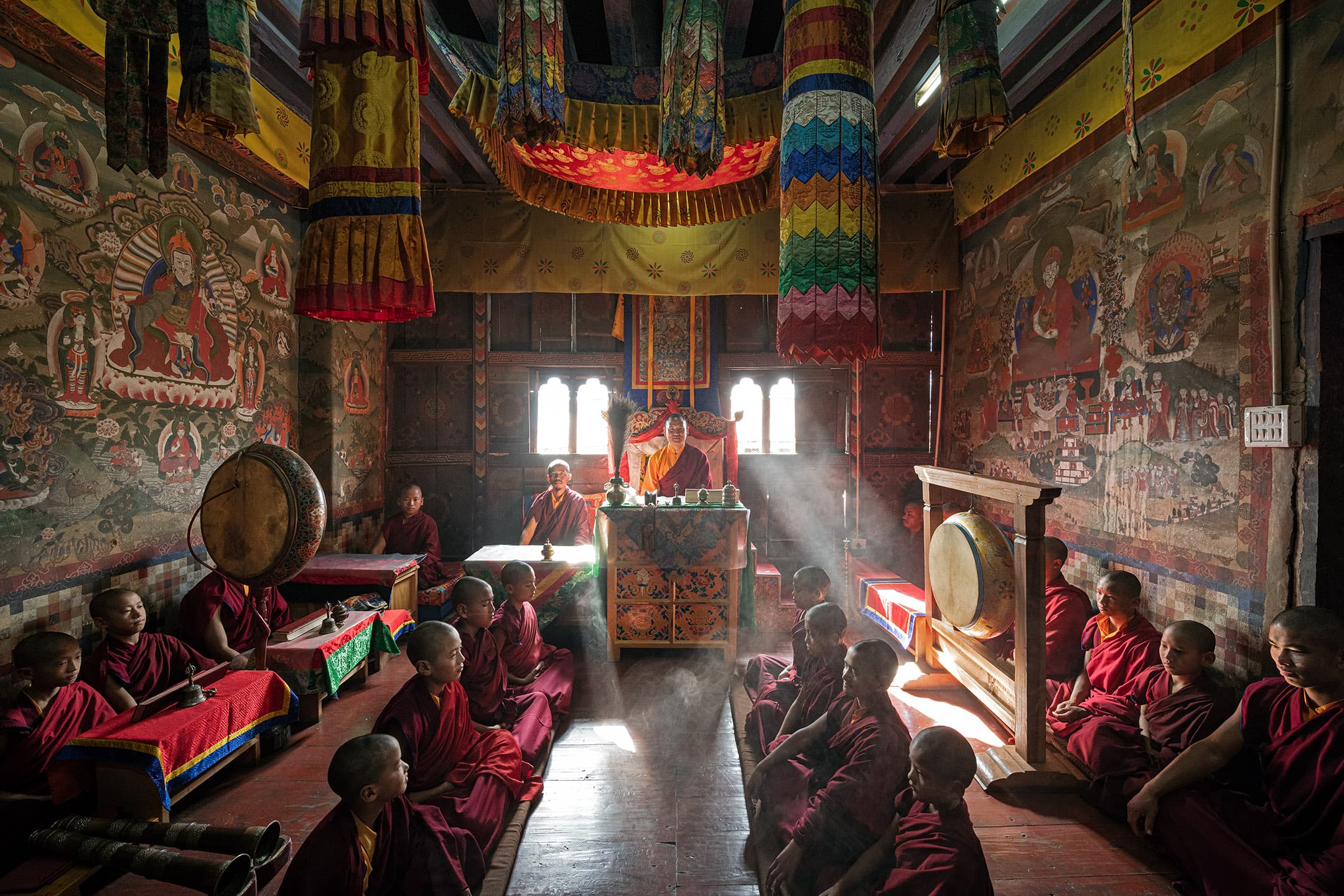
A peek inside the Sangchen Ogyen Tsuklag Monastery.
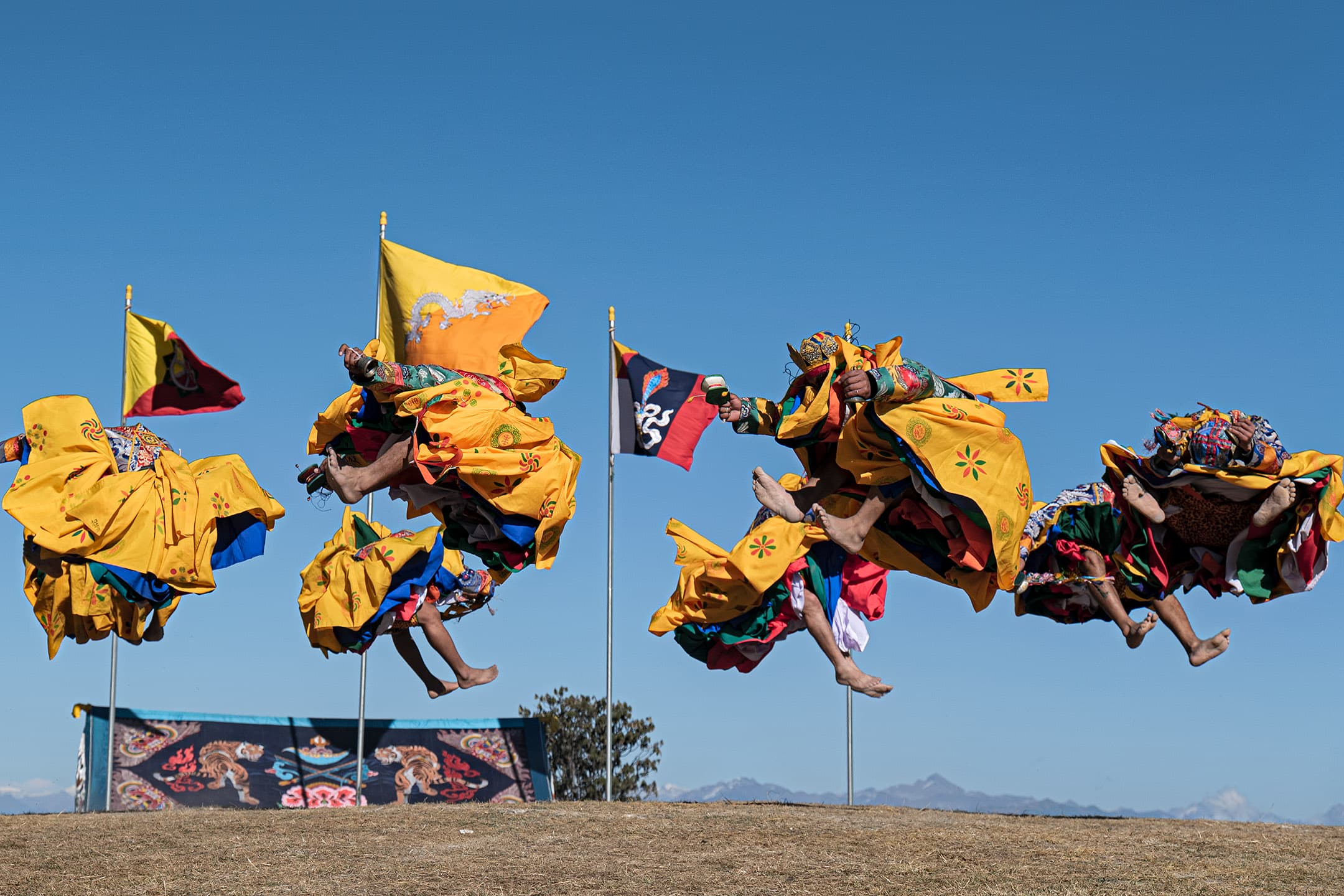
Members of the Royal Bhutan Army perform in the Dochula Druk Wangyel Festival, a celebration where Bhutan’s military members (rather than the monastery) recreate epic stories of gods, battles and heroes.
A SPIRITUAL HAVEN
While ticking off your Instagram bucket list to visit the famed Tiger’s Nest Monastery might have been an initial motivation to visiting the kingdom, immersive experiences end up being the most memorable aspects of Bhutan.
“It is a unique spiritual destination where the traveler immediately feels lighter when they reach the country. This is the perfect escape from the urban jungle that many of us live and work in, and a trip to Bhutan teaches one to look at life differently,” said Herison.
With 72% forest cover, spectacular rugged mountains, limpid lakes and rich wildlife, there is no doubt that Bhutan’s nature is stunning and pristine. It is from this exceptional environment
that stems a deeply esoteric land with a palpable spirituality.
“The Bhutanese carry the message of happiness, and the reason why they do is very closely related to the environment and the respect and symbiosis they have with it,” explains Khedrupchen Rinpoche of Sangchen Ogyen Tsuklag Monastery in Trongsa. “This itself can also make people think about what the genuine, true source of happiness is all about.”
Khedrupchen became the head of the monastery at only 19 years old; today at barely 30, the modern and outward thinking monk is passionate about making Buddhist teachings and meditation practices available to anyone. He works closely with Druk Asia on the Neykor Initiative, a series of immersive spiritual retreats in Bhutan that covers
a variety of themes, including the most recent “Applying Compassion in Business Management and Life.”
This is in line with the upswing of wellness and well-being tourism in the country, which offers an opportunity for year-round travel to Bhutan. The exceptional setting of Bhutan’s “ney” — or sacred sites said to have an abundance of auspicious natural and spiritual energy — is the key to making the country a unique choice for retreats.
“It begins with small things, like the forest and the flowers, then the food they eat and the people they meet,” said Khedrupchen. “Then if they go deeper, the spiritual and inspirational power is so strong here, the sense of joy and peacefulness is immediately transmitted, and it’s truly life changing.”
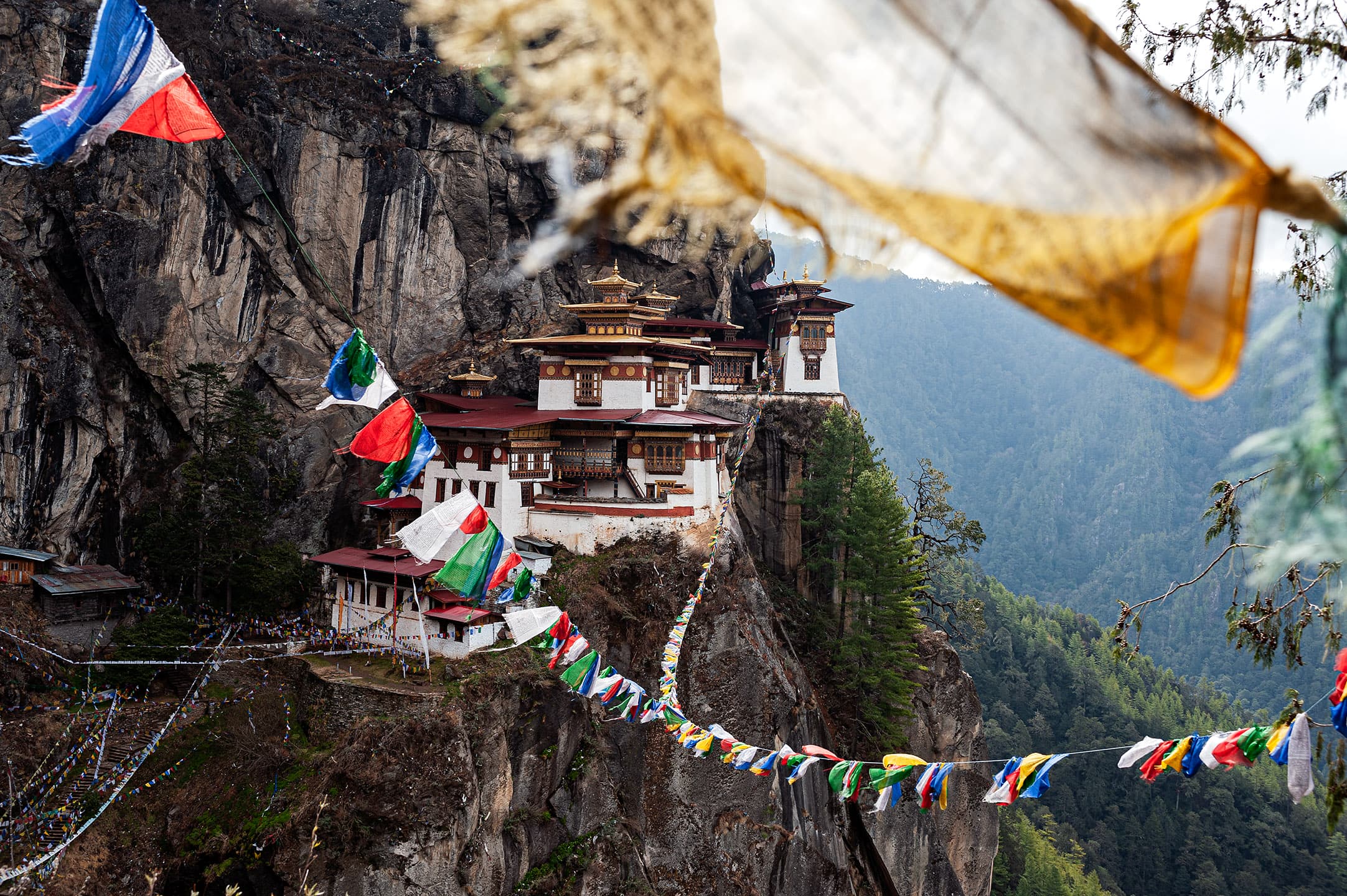
Bhutan’s Paro Taktsang, also known as the Tiger’s Nest Monastery.
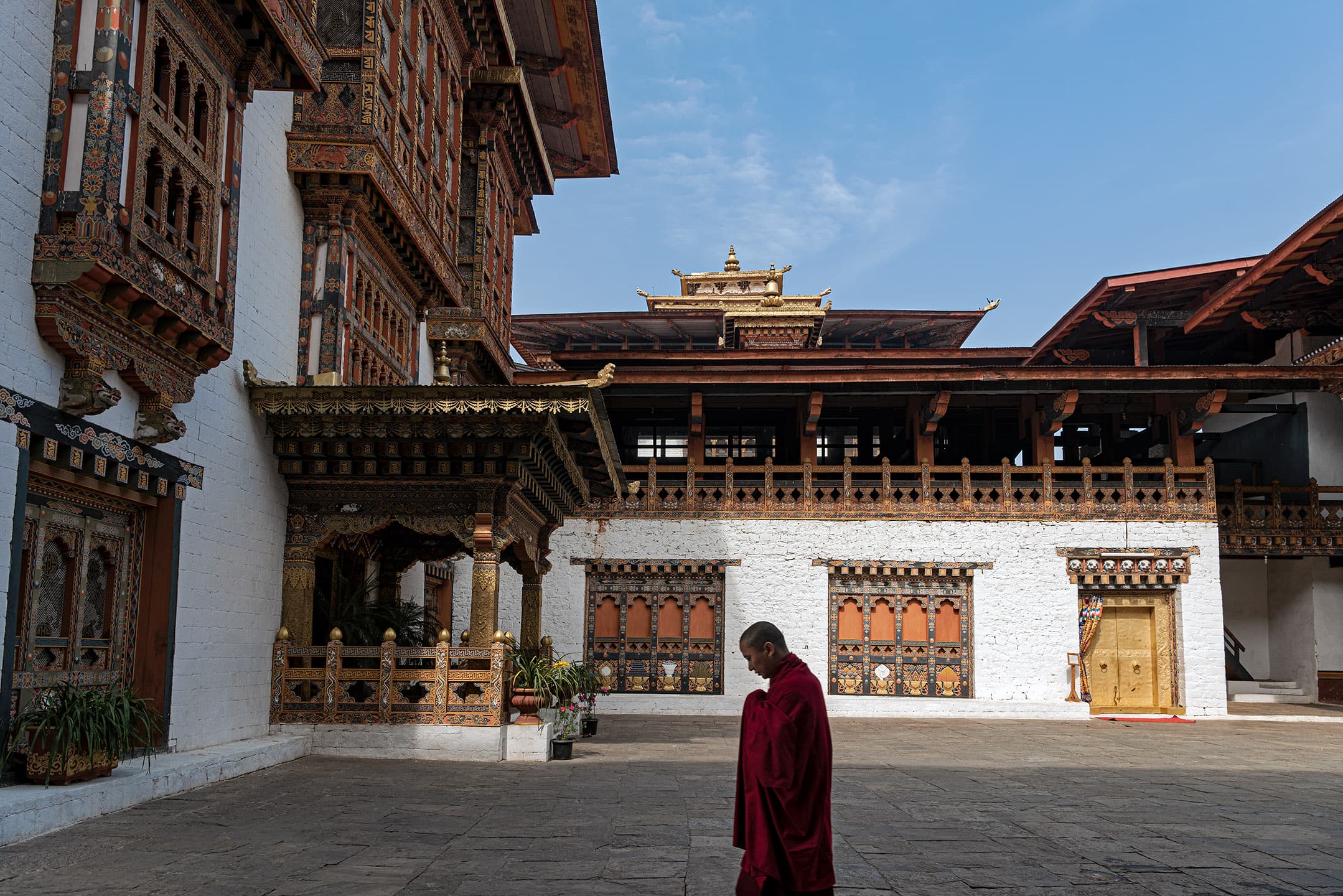
Punakha Dzong, located next to a river in the mountains of the Himalayas, is thought by many to be Bhutan’s most beautiful monastery.
GETTING OFF THE BEATEN PATH
Travel and adventure photographer, Scott A. Woodward, has visited Bhutan eight times in the past 12 years. Among all the places he’s traveled, Bhutan is closest to his heart.
“It is doubtless the most inspiring destination I have ever photographed,” he said. “As well as being tucked away physically, it’s tucked away philosophically and spiritually. Bhutan’s natural light is soft and golden, and the prayer-flag strewn, snow-capped vistas are breathtaking. Friendly Bhutanese in traditional dress fill the bustling city markets, while smiling monks in flowing maroon robes inhabit the ancient monasteries that dot the craggy countryside.”
While Tiger’s Nest Monastery and Punakha Dzong are the most heavily visited and iconic points of interest, Woodward shares with us his favorite off the beaten path sites.
While Tiger’s Nest Monastery and Punakha Dzong are the most heavily visited and iconic points of interest, Woodward shares with us his favorite off the beaten path sites.
Paro Dzong
While most tour groups customarily visit Thimpu Dzong, the head of the civil government in the capital where the King and Queen hold office, Woodward prefers the quieter Paro Dzong.
“It has the most character and a smaller number of visitors. When you’re there, you have total freedom to explore the amazing structure and fortress grounds.”
Jimi Langsto Lake
Remotely situated between Thimpu and Paro along the Druk Path, Jimi Langsto’s clear waters are a natural wonder. “The pristine alpine lake sitting above the tree line at 3,880 meters altitude is a beautiful reward at the end of a long trek across several Himalayan mountain passes.
Sangchen Ogyen Tsuklag Monastery
This amazing 8th-century lakhang is home to Khedrupchen and some of the country’s most precious religious treasures, notably a mural of a mandala depicting the deity Zhitro Lhatsog. The adventurous and awe-inspiring eight-hour drive from Paro to Trongsa, and a further hour and a half to the monastery, is worth taking.
“With the crisp mountain breeze and the golden light streaming through this historic building, the serenity and spirituality of the site is truly special,” said Woodward.
See more of my personal and editorial and commercial photography from the inimitable Kingdom of Bhutan. And read more of my CNBC Travel features in collaboration with writer Stephanie Zubiri.
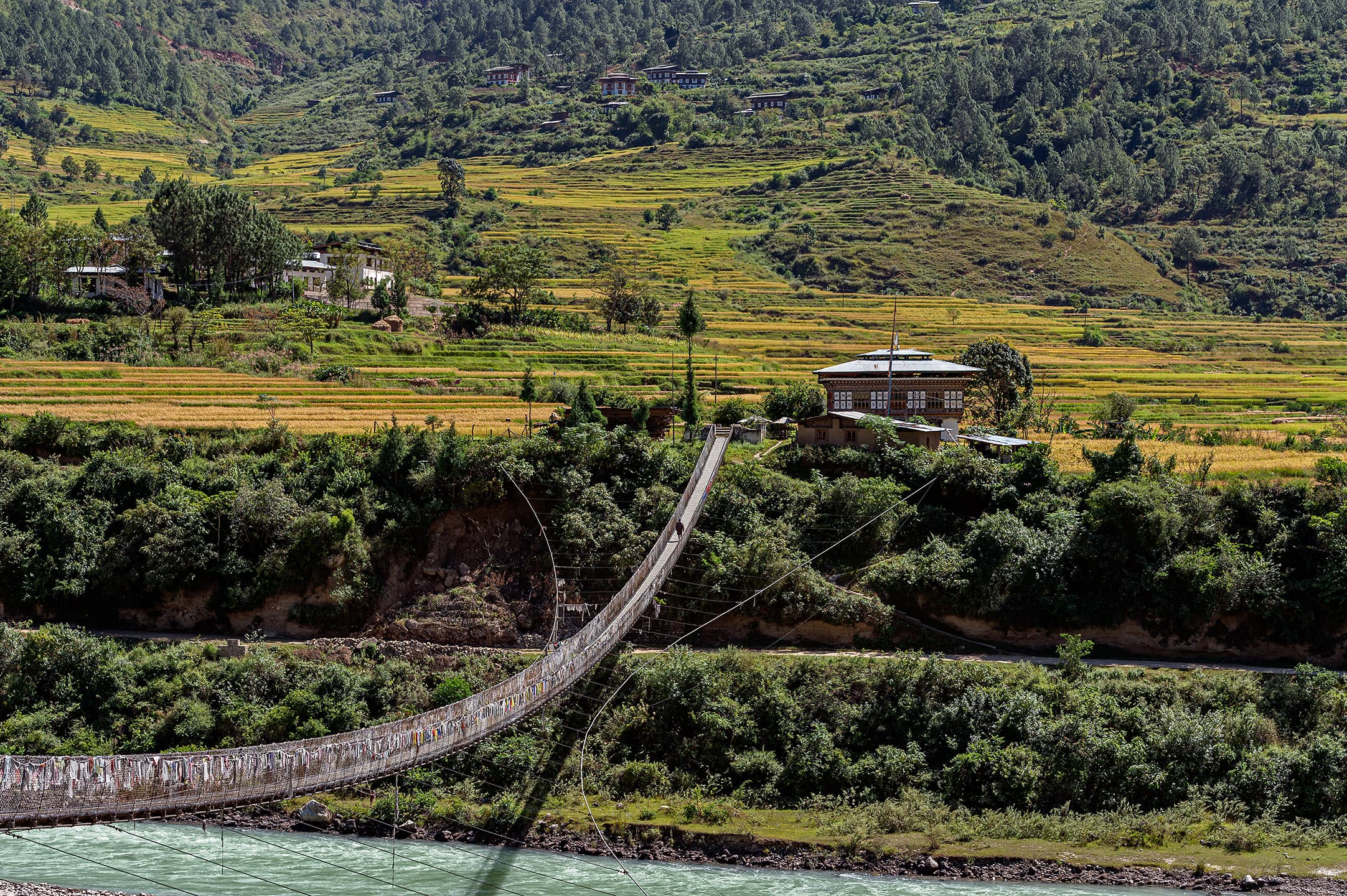
The Punakha Suspension Bridge, decorated with colorful prayer flags.
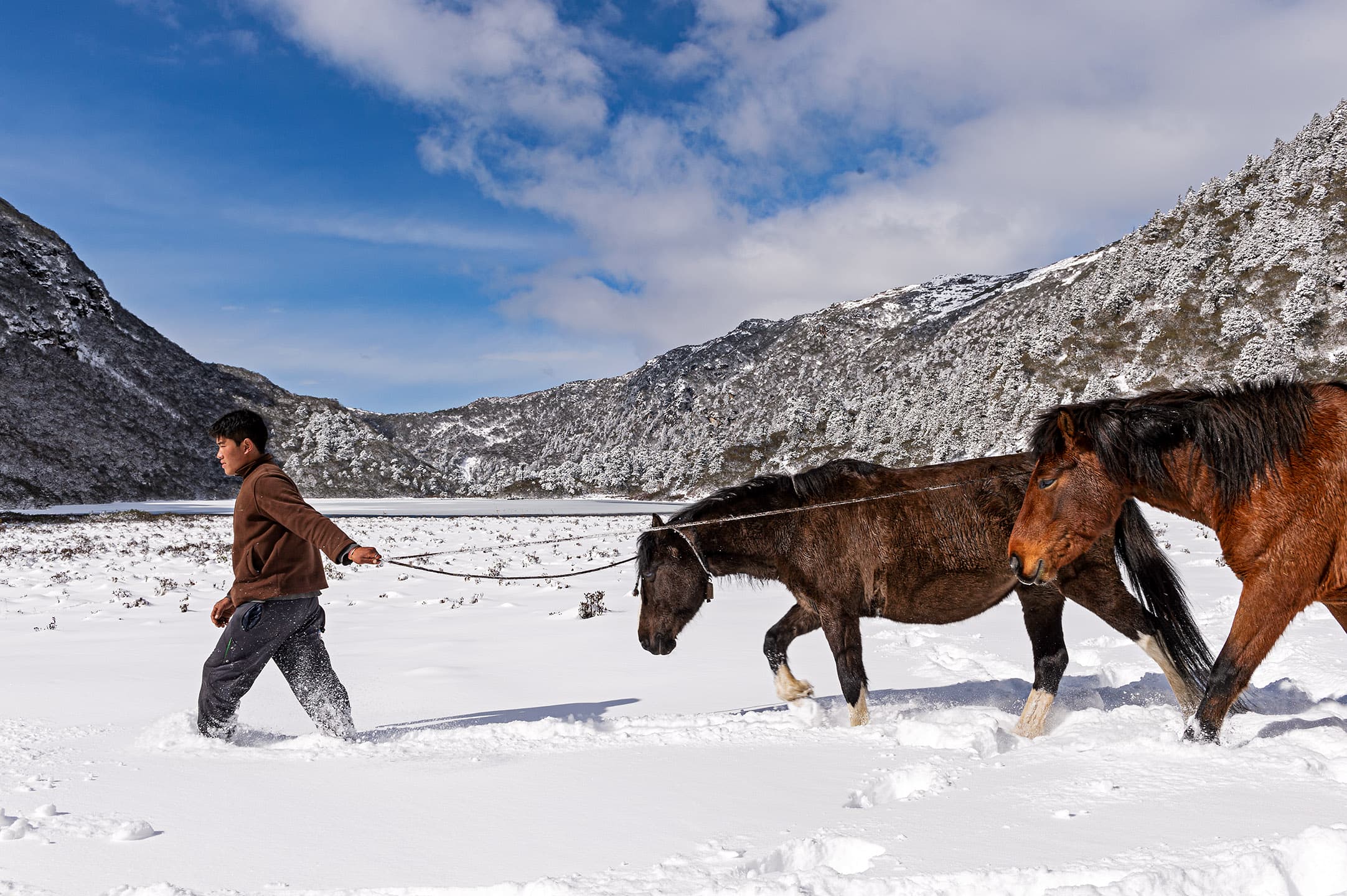
A man walks with his horses at the snow-covered Jimi Langsto Lake, located 12,800 feet above sea level along the Druk Path trek in the Himalayas.

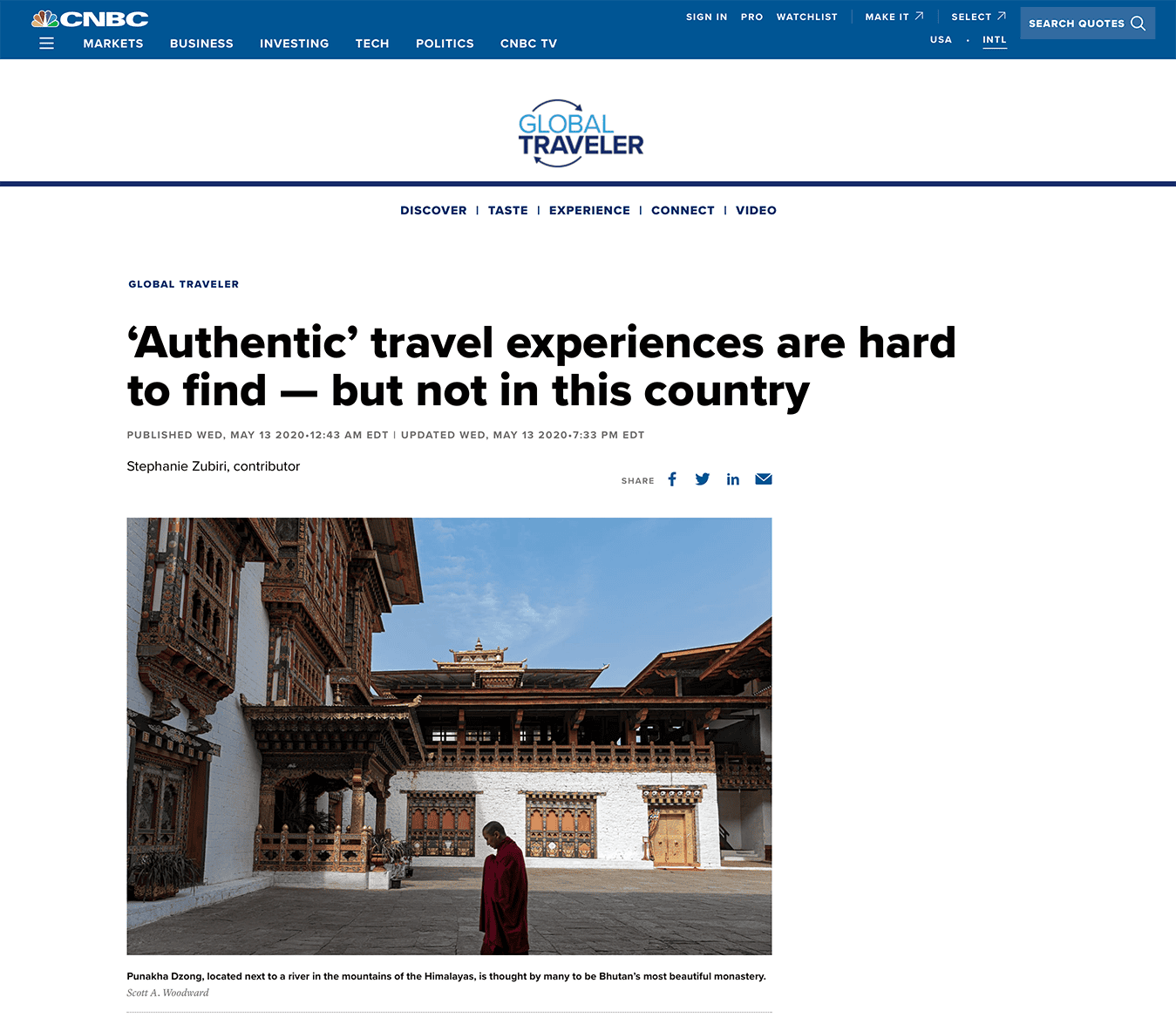
Share your thoughts